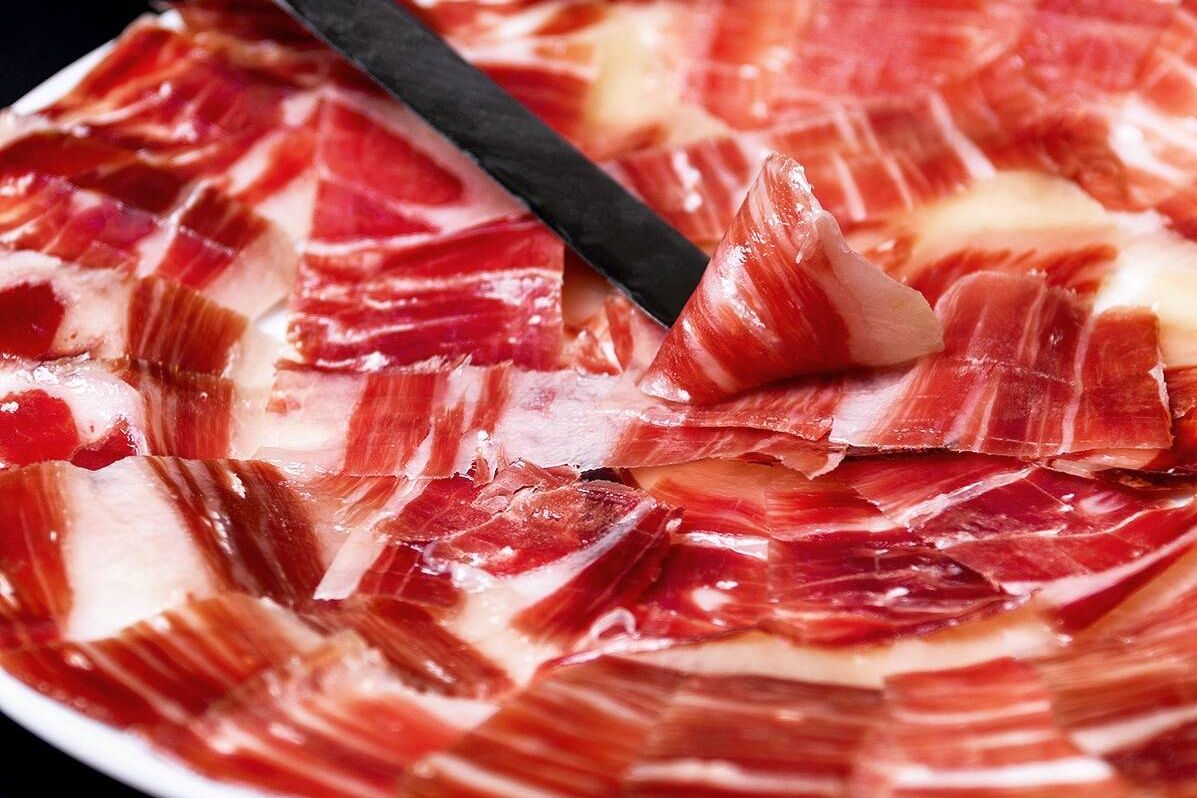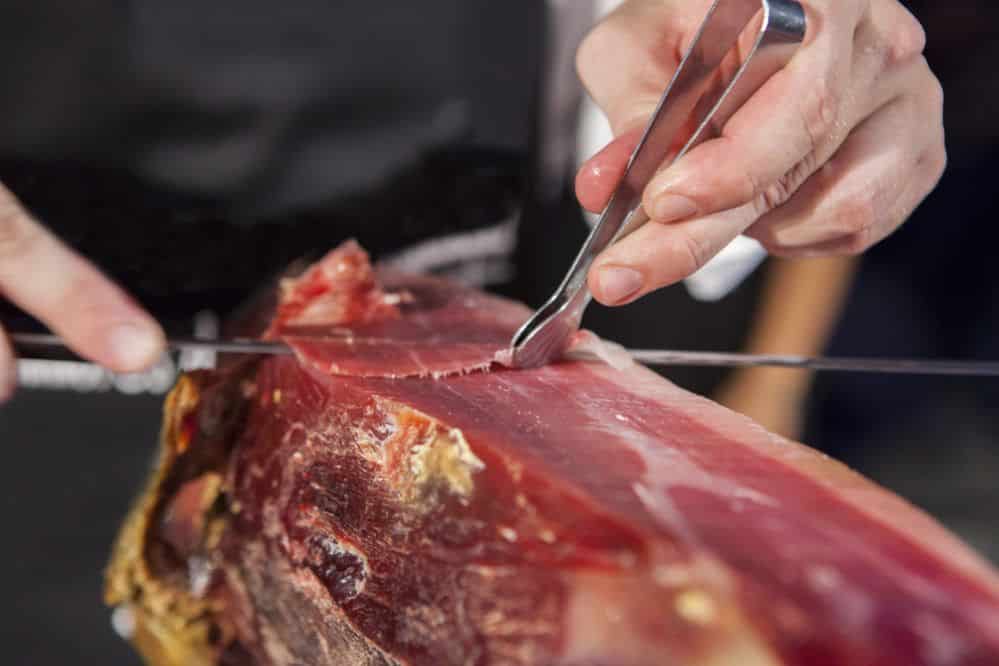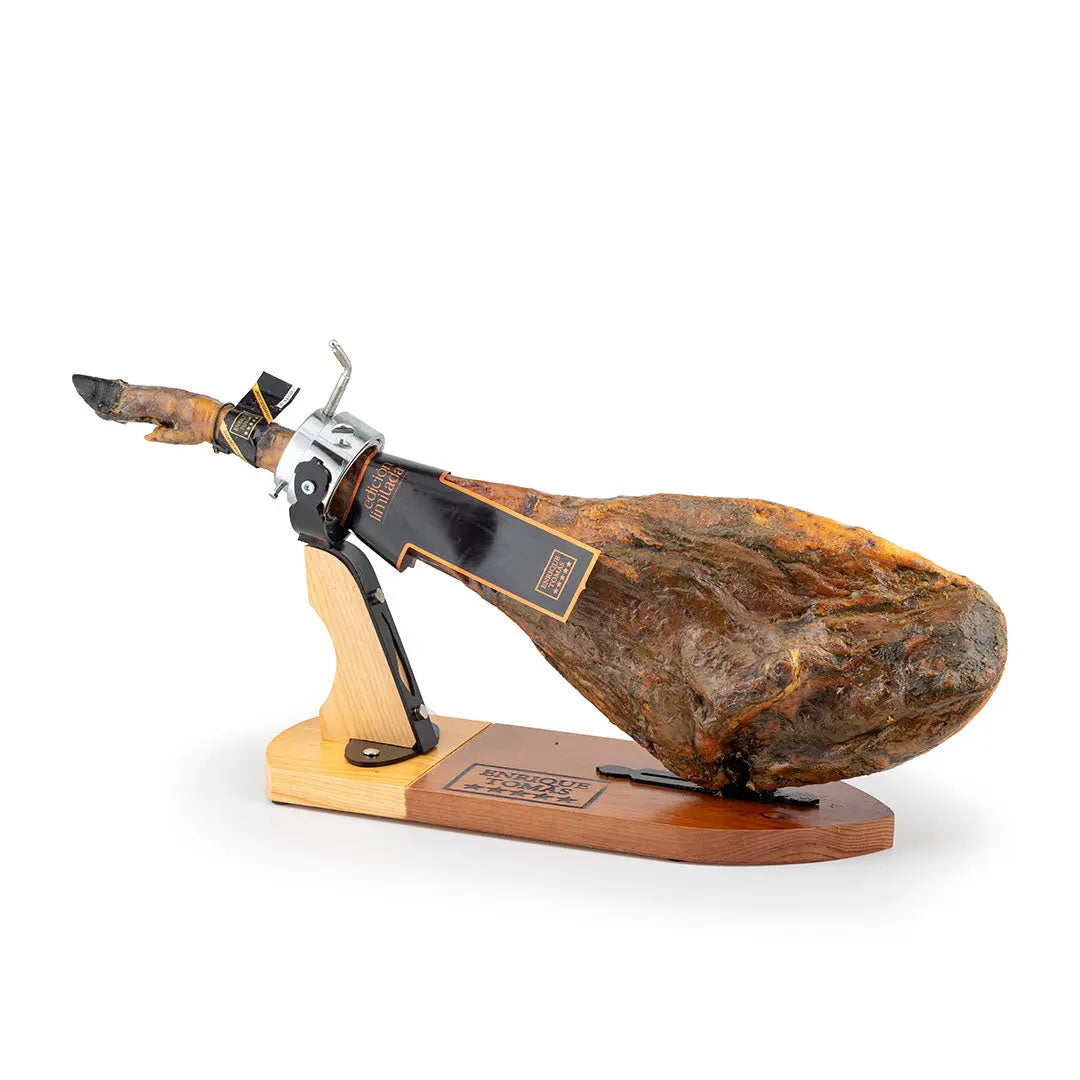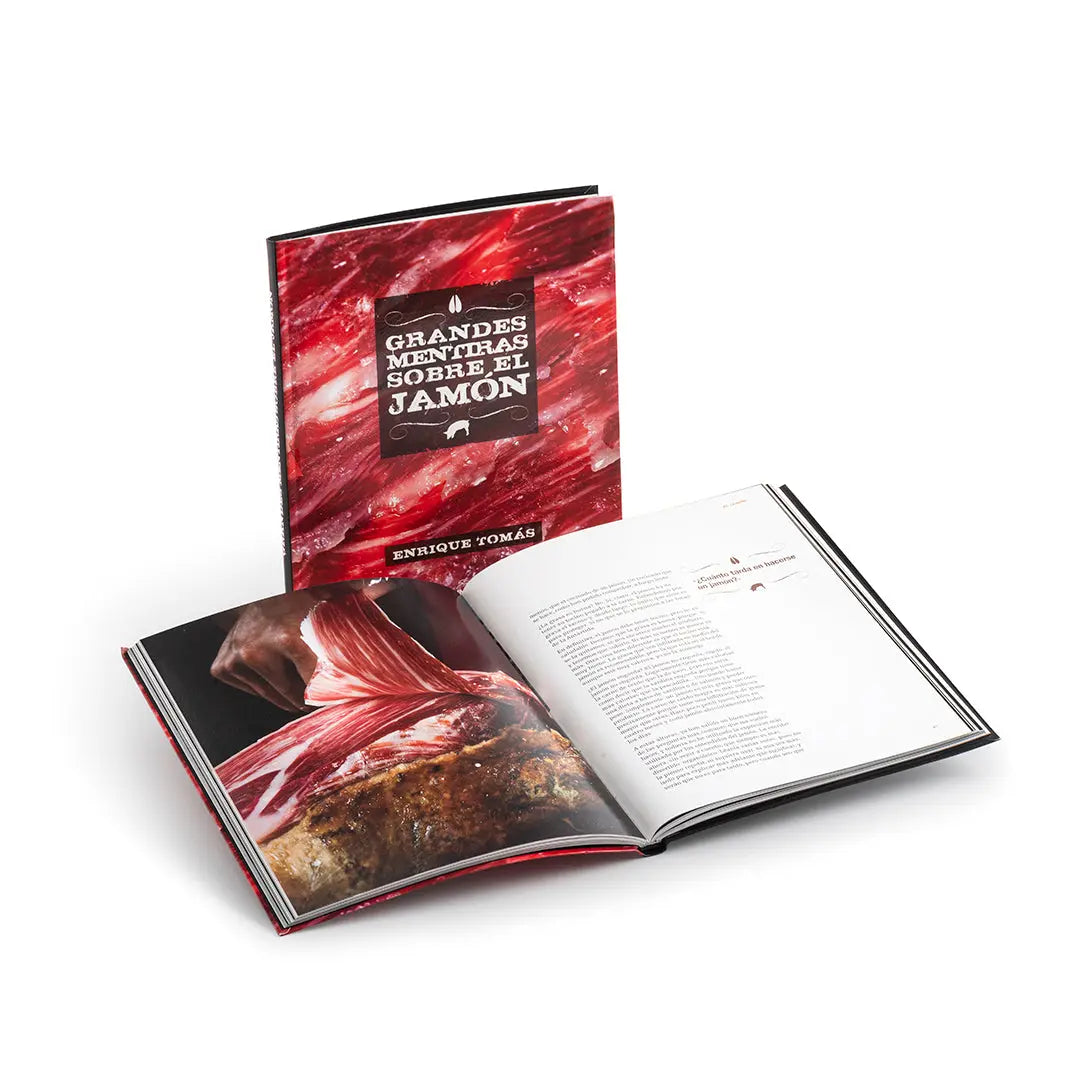
Do you think you already know everything about ham?
There are numerous false beliefs surrounding ham. Some passed down from generation to generation, like "you have to cover it with its own fat to preserve it better," and others more recent, a result of changes in societal habits and customs, such as "ham makes you gain weight."
If you think you know everything about ham, keep reading and you'll be surprised by the number of myths that have been created over all these years.
Since the best way to dispel a myth is through knowledge, Enrique Tomás, the world's largest chain of ham shops, aims to provide accurate arguments and facts about this native product of the Iberian Peninsula and its traditions.
The Most Notable Myths About Ham
Below we are going to tell you what myths have developed over the years around this product and all its related elements like cutting, preservation, or the best accompaniments.
“If it has white specks, it's bad”
Those white specks that sometimes dot the slices and, being unusual, give the impression that something is wrong with the product, actually indicate that it's excellent ham!
The white specks are crystals of tyrosine, one of the 20 amino acids that make up proteins. They appear during its maturation and are a clear sign that it has been properly cured. One property of tyrosine is its low solubility, so when the water in the ham tends to evaporate, it re-aggregates, forming these white crystals that indicate optimal aging and a product of the highest quality.
“Ham should always be paired with red wine”
Popular tradition has often linked red wine with this product. However, red wine is not the best beverage to accompany the tasting of good ham.
There's no doubt that red wine can be paired with countless meat dishes, cheeses, etc. But precisely because it has so much personality and a strong presence on the palate, it can overshadow and mask the flavor and nuances of the ham.
That's why we recommend that if you want to pair ham with wine, do so with a white wine or a mild red wine that won't drown out any aroma, allowing you to fully enjoy both flavors.
If you want to learn more about pairing to make the flavor of this product even more special, check out the following post where we tell you about the best companions for ham. And we recommend that you try our guided ham tasting, online and live, led by our experts in an easy and fun way.

Bellota 100% iberian ham tasting box
“Bellota Iberian ham comes from pigs that only eat acorns”
If a pig ate only acorns, it would get sick and die. Just like any human who ate only one type of food, no matter what it is. Iberian pigs that produce acorn-fed ham start by nursing from their mothers during the first weeks of life, then they eat grain and legume feed, grass, roots, aromatic plants, and finally, during the montanera season, acorns.
During their time in the pasture, they mainly feed on acorns, which they love, but they also eat different varieties of plants they come across.
- In this case, to learn more, we recommend checking out our posts on: "What is the montanera?" or "Everything about the Iberian pig".
“Ham should be covered with its own fat”
In many households, the belief persists that after opening, you should keep a piece of the fat that has been removed to cover the cut part of the ham to preserve it better. And that's completely false.
First, if you're slicing a bit every day, all it needs is to be placed in a spot without drafts and covered with a lint-free cotton cloth to prevent light from penetrating the cut.
Secondly, if you leave it in contact with the fat, it becomes greasier, which distorts its flavor. A ham that has been curing for months, even years, to acquire its special taste doesn't deserve to be spoiled at the last moment. It has the right amount of fat; it doesn't need more.
- Discover more tips on "How to Preserve Ham" and become an expert on the subject.

Ham Cutting
"The more expensive the ham, the better it is"
As we often think in all areas, what's more expensive is better. And most of the time, it's not true. The same goes for ham; that's why at Enrique Tomás, we want to debunk this belief so you know that this product isn't about prices, but about tastes. Some people prefer it more cured, others more tender, some richer in flavor, and others less salty.
To know which one is the best for you, if you're not familiar with them, it's best to try them all, and then the one you like the most will be the best. At Enrique Tomás, we know that the best ham is the one that delights your palate when you taste it, regardless of its price or variety. What matters is that, whatever it is, you buy the best quality within its range, whether it's a grand reserve or a premium Iberian ham.
Learn about all the types of ham and choose the best one for you.

Jamón bellota 100% ibérico (iberian breed) - limited edition
For Enrique Tomás, giving Iberian ham the place it deserves among the world's gastronomic treasures is practically a duty.
That's the summary of myths or false beliefs about ham. If you're still curious to know more and want to delve into this world and its traditions, we recommend the book "Grandes mentiras sobre el jamón" written by Mr. Enrique Tomás, the creator of our ham shops and a great expert on the product and everything surrounding this tradition.

Book 'grandes mentiras sobre el jamón' (only in spanish available)





